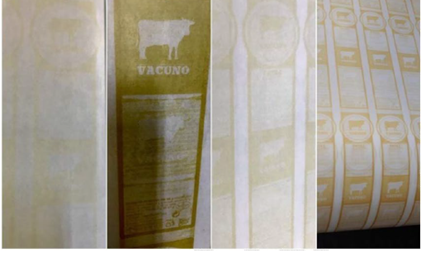Plasmonics, a subfield of nanophotonics, has gained significant attention in recent years due to its potential to revolutionize various technological applications. It is primarily centered around the manipulation of surface plasmon resonances in metallic nanoparticles to access their unique optical properties. These properties offer the ability to customize and enhance optical processes.
However, achieving precise control and scalability in the fabrication of plasmonic nanostructures has been a longstanding challenge in the field. Traditional fabrication techniques have often resulted in particles with limited reproducibility, thus impeding their adoption in practical application.
In response to this challenge, researchers at the University of Valencia have developed a new nanometric ink coating designed for use as a photocatalyst in the rapid synthesis of nanoparticles through exposure to ultraviolet light (UV).
The coating is created from a metal oxide solution and has the capability to absorb UV light and catalyze solid-state reactions. It achieves satisfactory reaction yields and adhesion properties within a short exposure time. Activation as a photocatalyst takes place during the deposition process at room temperature, eliminating the requirement for heating, which is typically necessary in traditional methods.
The present invention is useful in the manufacturing and deposition of nanomaterials, that have countless applications in fields such as catalysis, biotechnology, photovoltaics or photonics. Researchers have primarily focused on its potential uses in the food and packaging sector, acting as a barrier to UV light, with biocidal properties and antioxidant capacity.

A Spanish Patent application has been submitted in 2022. The current TRL for the invention is 5-6. Furthermore, the use and printing of the ink has already been validated in an industrial environment.
Benefits
- Reduces material preparation time, enabling rapid nanoparticle production within seconds using flexography printing.
- Reduces investment costs due to the low cost of required equipment.
- Enhances applicability and adaptability by enabling printing on flexible plastic materials.
- Operates at room temperature, making it energy-efficient and preserving substrate integrity.
- Delivers high reaction yields and adhesion properties with short exposure times, ensuring the quality of end products.
- Eliminates the need of pre-treatments such as heating.
Applications
This technology can be used in multiple applications due to its specific characteristics.
- Packaging: Smart packaging that enhances shelf life and durability.
- Food industry: Enhanced food preservation and freshness labels for packaging perishable goods.
- Pharmaceutical industry: Protection of light-sensitive pharmaceutical products and other sensitive biological materials.
- Industrial technology: Targeted at ink and label printing manufacturers to improve the properties of their products.
The represented institution is looking for a collaboration that leads to commercial exploitation of the presented invention.
Institution: Universitat de València
TRL: 5-6
Protection status: Patent Application
Contact: Laura Núñez / laura@viromii.com

